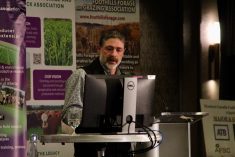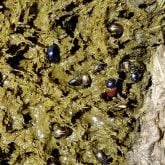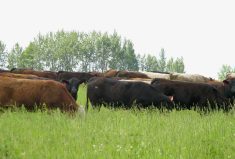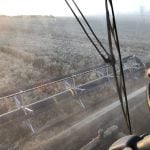There sure is a lot of fuss about nitrogen right now. Farmers are protesting the new rules about nitrogen use and I get it. When your way of life is jeopardized, it is only natural to push back. I want to stress that we can’t forget about the human element in this situation. For years, farmers have been trained how to use N, how much to use, when to use it, where to put it and what kind to use. Farmers have been handed a recipe that made sense and now they are being told that they need to cut back. Is anyone really surprised at the protests?
I agree that we should reduce fertilizer use and that we need to worry about the environment, but we also have to worry about the people. Farmers’ livelihoods are at stake and we are asking them to change. It is not a secret that farmers in general do not like change. Why? Because farmers are mostly “ants.” It is just who they are.
If you have ever taken one of my schools, you will know that human resources is the most important part of my business and understanding personality styles is a very big part of that.
Read Also

Canadian Beef Check-Off Agency reports on investments and activities
The check-off agency’s work behind the scenes is what ensures cattle check-off dollars are invested wisely, accounted for transparently and deliver measurable value back to producers and importers.
In my personality test, there are four basic types of personalities:
- The dragonfly – very dominant and direct.
- Butterflies – social butterfly in the group.
- Ants – hardworking but resistant to change.
- Bumblebees – the perfectionist.
Not everyone is just one style or another. We might be a blend of two or three. But one style might see things differently than another. It is not surprising that some professions will attract one style of personality more than others. For example, bankers and accountants tend to be bumblebees, police officers and teachers tend to be dragonflies and sales and marketing professions attract the butterflies.
In agriculture, we end up with more ants. This personality style needs consistency. They are predictable, patient, understanding and good listeners. They are hard workers and will get the job done. However, they may be resistant to change and may rather do the job themselves.
And now the world wants these ants to change and cut nitrogen use? Good luck with that.
[RELATED] Canada can cut fertilizer emissions 14 per cent by 2030, industry groups say
A much more effective way to encourage change would be to provide education and incentives to work with farmers in addressing the issues. An ant needs to desire change, it can’t be forced.
What if we could show the ants that it is in their best interest to find another way to acquire nitrogen? Maybe a more economical way?
I have shared the results of Darrin Quallman’s research a few times about the Canadian farmers’ net farm income over the last hundred years. He shows that since about 1985, the Canadian farmers’ net income had declined drastically (not counting farm support payments). It is quite alarming when you see the graph showing these results. Most of the farmer’s dollar goes to the ag industry and a big chunk of this goes to crop inputs.
Could we help the farmer find another way? Nitrogen is a huge part of the farmer’s way of life so let’s look to see if we can get it a little cheaper. How do we get it?
Did you know that the air we breathe is 78 per cent nitrogen? We can also store nitrogen in the soil but is there a way to store more?
Most producers understand that we can get nitrogen from legumes. However, it is actually the rhizobium bacteria (“little biology”) associated with the legumes that pull nitrogen from the air. They then give the nitrogen to the plant in exchange for some sugar. Seems like a fair trade, right?
[RELATED] Rebuilding or replacing forage stands
There are also free-living bacteria in the soil that can acquire nitrogen and do the same thing. To get more nitrogen, we need to provide an environment that supports these bacteria. One of the downsides to our current agriculture model is that many of the inputs that we use, including fertilizer, are detrimental to our soil life. It is a downward spiral. Are we able to show the farmer that it would be in their best interests, in the long run, to get off this downward spiral? Let’s show them that nitrogen is free. It is all around us.
How about increasing nitrogen storage? Over the years, the carbon content has been dropping on a lot of our agricultural land. We lose carbon from the soil when we till, we lose some more from erosion and we lose some more by selling our crops which export nutrients from the land. My concern is that when we reduce carbon in our soil, we also reduce the ability of the soil to store nitrogen, as our soil biology tries to balance the ratio of carbon to nitrogen.
Instead of adding nitrogen, let’s focus on increasing the carbon content in our soils. I know that sounds like a long-term goal but on our farm, we have increased our soil organic matter from 5.2 per cent to 11 per cent in just 12 years. That is half a per cent per year. Can we do this on our croplands as well? I think we can. As an example, one of my neighbours cut his nitrogen fertilizer in half this year and used alfalfa pellets instead. He said the pellets were cheaper and his crop looked fantastic in July. I thought that was a great idea and I hope it works for him. I’m thinking the pellets will add carbon to the soil and slow-release nitrogen plus all sorts of other nutrients that might take years to show results. I would suspect that cutting all the fertilizer and just going with all pellets would not work. The soil needs to be weaned off artificial nitrogen slowly.
A huge step forward to acquiring more fertility in our cropland would be to reintroduce livestock (“big biology”). This way we would start to recycle nutrients into the system. Cropland needs perimeter fences again. In our area, most of the fences have been removed.
We are working with a local grain farmer to bring some cropland back to life. We put up the fence and will be grazing it for four years. I call it a graze fallow. All of the nutrients will be recycled back to the land over that period, and we will focus on building the soil biology. This will also start to increase the carbon content of the land. After four years, the land will be returned to crop production. Our goal is to increase the percentage of carbon in the soil and therefore increase the available nitrogen. We can use big biology to increase little biology. I believe that livestock should be a part of every crop farmer’s rotation.
Acquiring nitrogen and healing the land this way will take time. I know the issue here is the enormous debt load that most farmers carry. Payments won’t wait for us to heal the land. Again, it is a downward spiral of debt. When should we jump off?
We do not have a fertility issue in agriculture, we have a biological issue. We need both the big biology and the little biology to heal the land.
Again, we can’t forget about the human part of this equation. Can we work with our farmers and come up with some solutions that will not only reduce our environmental concerns around nitrogen but also address the farmers’ economical concerns? Can we allow some time for our ants to change? I think we can, but we need more research. So far, there has been very little research in regenerative cropping practices. We need time to make some mistakes and figure some of these things out.
As farmer and author Joel Salatin says, “If something is worth doing, it is worth doing poorly first.” Right now, it is only the innovators and early adopters who are financing these mistakes. It is time to get some research behind this. This research is worth doing. Let’s start funding some mistakes.
Steve Kenyon runs Greener Pastures Ranching Ltd. in Busby, Alta. Visit the website or call 780-307-6500, email [email protected] or find them on Facebook.

















